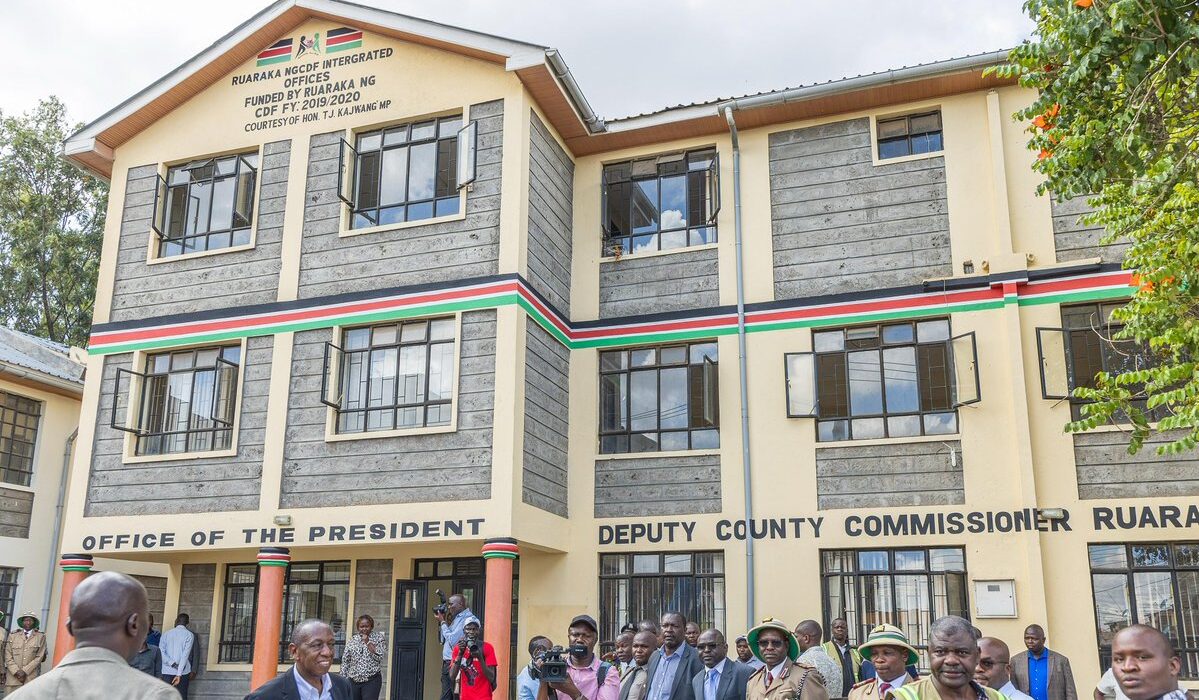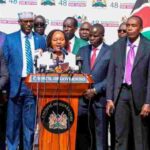The National Government Constituencies Development Fund (NG-CDF) has been a game-changer, channeling billions of shillings into grassroots development. From Nairobi’s towering Ksh 24.7 billion to Lamu’s modest Ksh 2.9 billion, these funds have fueled projects in education, security, and infrastructure across all 47 counties. For Kenyan business professionals, this data isn’t just numbers—it’s a treasure map to opportunities in procurement, investment, and community partnerships.
This article dives into the total NG-CDF allocations per county since devolution began, offering a data-driven look at where the money’s flowing and what it means for your business in 2025. Optimized for keywords like “NG-CDF allocations by county,” “Kenya devolution funding 2025,” and “county development funds,” it’s packed with insights to help you stay ahead. Let’s unpack it.
Why NG-CDF Allocations Matter to Kenyan Businesses
The NG-CDF, established under the Constituencies Development Fund Act of 2003 and realigned with devolution in 2013, mandates at least 2.5% of national revenue for constituency-level projects. By 2025, cumulative disbursements since FY 2013/2014 total Ksh 435 billion across Kenya’s 290 constituencies, with counties reaping varying shares based on their number of constituencies and population dynamics.
For businesses, NG-CDF isn’t just public funding—it’s a catalyst. It builds schools, police posts, and roads, creating demand for construction, supplies, and services. Understanding which counties have received the most (and least) can guide your strategy—whether you’re bidding for contracts, setting up shop, or investing in local growth.
Top NG-CDF Recipients: The Big Spenders
Here’s where the lion’s share of NG-CDF funds has landed since 2013:
1. Nairobi – Ksh 24.7 Billion
- Why It Tops: With 17 constituencies, Nairobi’s urban density and political clout secure it the highest allocation.
- Business Play: Construction firms, suppliers, and tech startups can tap into education and security projects.
2. Kakamega – Ksh 18.1 Billion
- Western Heavyweight: Its 12 constituencies and large rural population drive hefty funding.
- Opportunity: Furniture makers and contractors thrive on school infrastructure projects.
3. Kiambu – Ksh 17.6 Billion
- Nairobi’s Neighbor: 12 constituencies and proximity to the capital boost its share.
- Insight: Logistics and retail businesses can leverage peri-urban growth.
4. Nakuru – Ksh 16.3 Billion
- Rift Valley Leader: 11 constituencies and a mix of urban-rural needs fuel allocations.
- Tip: Solar firms and builders can target security lighting and classroom projects.
5. Bungoma – Ksh 13.7 Billion
- Western Stalwart: 9 constituencies focus on education and community facilities.
- Market Potential: Bursary programs create demand for educational supplies.
These top five have soaked up over Ksh 90 billion combined, reflecting their constituency count and development needs. For businesses, they’re hotspots for contracts and partnerships.
Mid-Tier Counties: The Steady Players
Counties with Ksh 5.9 billion to Ksh 13.6 billion form the backbone of NG-CDF spending:
- Kisii (Ksh 13.6B): 9 constituencies prioritize education.
- Meru (Ksh 13.4B): 9 constituencies fuel agro-based projects.
- Kitui (Ksh 12.2B): 8 constituencies focus on rural infrastructure.
- Machakos (Ksh 12.0B): 8 constituencies near Nairobi drive demand.
- Migori (Ksh 12.0B): 8 constituencies blend mining and farming needs.
- Homa Bay (Ksh 11.9B): 8 constituencies target fishing communities.
- Kilifi (Ksh 10.8B): 7 constituencies boost coastal projects.
- Kisumu (Ksh 10.5B): 7 constituencies thrive on trade hubs.
- Busia (Ksh 10.5B): 7 constituencies leverage cross-border trade.
- Murang’a (Ksh 10.4B): 7 constituencies focus on agriculture.
- Mandera (Ksh 9.6B): 6 constituencies tackle arid challenges.
- Turkana (Ksh 9.5B): 6 constituencies eye oil and security.
- Wajir (Ksh 9.2B): 6 constituencies prioritize pastoral projects.
- Makueni (Ksh 9.2B): 6 constituencies push resilience.
- Narok (Ksh 9.0B): 6 constituencies mix tourism and farming.
- Garissa (Ksh 9.0B): 6 constituencies focus on security.
- Siaya (Ksh 9.0B): 6 constituencies target education.
- Uasin Gishu (Ksh 8.9B): 6 constituencies drive agro-projects.
- Nandi (Ksh 8.9B): 6 constituencies support farming hubs.
- Kericho (Ksh 8.9B): 6 constituencies boost tea regions.
- Baringo (Ksh 8.9B): 6 constituencies blend livestock and tourism.
- Nyeri (Ksh 8.8B): 6 constituencies focus on coffee zones.
- Mombasa (Ksh 8.8B): 6 constituencies fuel port-related growth.
These counties, with 6-9 constituencies each, offer steady opportunities for mid-sized firms in construction, education, and security sectors.
Lower-Tier Counties: The Underdogs
Counties below Ksh 8.8 billion often have fewer constituencies but hold untapped potential:
- Bomet (Ksh 7.6B): 5 constituencies focus on tea and maize.
- Trans Nzoia (Ksh 7.6B): 5 constituencies lead in agriculture.
- Kajiado (Ksh 7.5B): 5 constituencies blend tourism and real estate.
- Nyandarua (Ksh 7.4B): 5 constituencies target potatoes.
- Vihiga (Ksh 7.4B): 5 constituencies focus on dense populations.
- Kwale (Ksh 6.3B): 4 constituencies boost coastal growth.
- West Pokot (Ksh 6.1B): 4 constituencies eye pastoral gains.
- Nyamira (Ksh 6.1B): 4 constituencies prioritize farming.
- Marsabit (Ksh 6.0B): 4 constituencies tap renewable energy.
- Elgeyo Marakwet (Ksh 6.0B): 4 constituencies focus on athletics hubs.
- Embu (Ksh 5.9B): 4 constituencies target agro-projects.
- Taita Taveta (Ksh 5.9B): 4 constituencies mix mining and tourism.
- Kirinyaga (Ksh 5.9B): 4 constituencies focus on rice.
- Laikipia (Ksh 4.5B): 3 constituencies blend ranching and tourism.
- Tana River (Ksh 4.5B): 3 constituencies eye irrigation.
- Samburu (Ksh 4.5B): 3 constituencies focus on tourism.
- Tharaka-Nithi (Ksh 4.5B): 3 constituencies target farming.
- Isiolo (Ksh 3.0B): 2 constituencies prioritize trade routes.
- Lamu (Ksh 2.9B): 2 constituencies focus on port potential.
Fewer constituencies mean smaller pots, but innovative businesses can find niches here—think solar lighting in Marsabit or school supplies in Nyamira.
Regional Breakdown: Where Funds Flow
- Nairobi (Ksh 24.7B): Urban giant with 17 constituencies.
- Central (Ksh 56.0B): Kiambu, Murang’a, Nyeri, and more.
- Rift Valley (Ksh 83.6B): Nakuru, Uasin Gishu, and Narok lead.
- Western (Ksh 57.7B): Kakamega, Bungoma, and Busia dominate.
- Nyanza (Ksh 53.1B): Kisii, Migori, and Homa Bay shine.
- Eastern (Ksh 47.8B): Kitui, Machakos, and Meru stand out.
- Coast (Ksh 39.2B): Kilifi, Mombasa, and Kwale drive it.
- North Eastern/ASAL (Ksh 47.8B): Mandera, Turkana, and Wajir lag but grow.
High-constituency regions like Rift Valley and Central lead, while ASALs show potential with fewer players.
What Drives NG-CDF Allocations?
Key factors shape the funding pie:
- Constituency Count: More constituencies = bigger share (Nairobi’s 17 vs. Lamu’s 2).
- Population: Dense areas like Kakamega get more for community needs.
- Poverty Levels: ASALs like Turkana get boosts for equity.
- Policy Shifts: Post-2013 alignment with devolution prioritizes national functions (education, security).
For businesses, this means targeting high-constituency counties for scale or ASALs for niche impact.
Economic Impact: NG-CDF as a Business Booster
Since 2013, Ksh 435 billion in NG-CDF funds have spurred:
- Jobs: Over 85,000 projects created construction and supply roles.
- Infrastructure: 55% of funds go to education (classrooms, bursaries), 6% to security (police posts).
- Local Spending: Each billion triggers demand for materials and services.
Businesses in construction (Ksh 500K/classroom), supplies (Ksh 100K/furniture set), or training can ride this wave.
Challenges in NG-CDF Spending
Not all is smooth:
- Disparities: Nairobi’s Ksh 24.7B vs. Lamu’s Ksh 2.9B highlights inequity.
- Misuse: Past scandals (e.g., ghost projects) dent trust.
- Delays: Bureaucracy slows disbursement.
These gaps are your entry—offer transparency tools or fast-track solutions.
Opportunities for Businesses in 2025
Here’s your playbook:
- Top Counties: Bid for contracts in Nairobi and Kakamega.
- Mid-Tiers: Supply materials to Kisii or Kilifi projects.
- ASALs: Innovate with solar or water solutions in Turkana.
- Education: Equip schools in Meru and Bungoma.
- Security: Build police posts in Mandera or Garissa.
The funds are flowing—get in on the action.
Future Trends: NG-CDF by 2030
Expect:
- Growth: Allocations could hit Ksh 60B annually with revenue rises.
- Tech Focus: Digital classrooms and smart security projects.
- Equity Push: ASALs may see bigger slices.
Align your business with these shifts for long-term wins.





